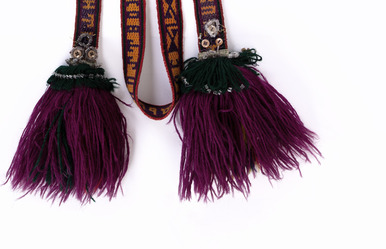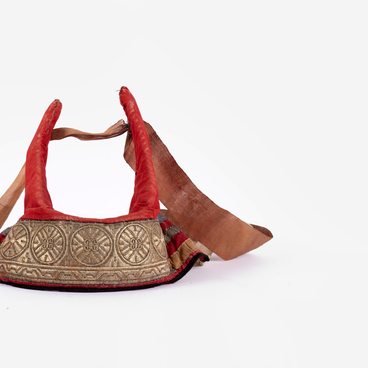The outfit of a peasant who traveled in winter in a sleigh consisted of a shirt, warm pants, a fur coat belted with a sash, a sheepskin coat, a hat with a fur brim, felt boots, and mittens.
Of particular note is a special traveling garment — “tulup” or “armyak”, worn by Russians across the board, and the local differences were insignificant and concerned mainly the color scheme. It was a rather wide and long garment of sheepskin (tulup) or thick cloth (armyak) with a high collar. The large size of travel clothing was explained by the fact that it could be put on top of the outer clothing made of cloth and fur, even over a fur coat and lower tulup, which provided considerable warmth in cold weather and protection from bad weather. The raised collar almost completely covered the head, serving as a hood. While traveling, a tulup was worn in the sleeves and belted or thrown over the shoulders. In the latter case, the overcoat, put directly on the shirt, tightly wrapped and belted — it was warmer like that. Warm dense material and a comfortable cut made the tulup, as well as the armyak, a favorite garment of coachmen and carriage drivers.
Tulups, like other fur garments, in particular fur coats, could be uncovered (and then their color depended on the processing and dyeing of the sheepskin, which was based on the owner’s preferences) or covered with homespun and, less often, factory-made cloth of different color shades. Black, blue, and brown were popular colors, but for the lack of a good cloth, gray canvas was used.
Winter hats were not very diverse; one popular form had a hemispherical top made of velvet, cotton or linen cloth lined with fur or quilted with tow, often with a fairly wide brim of sheep or wild animal fur, as well as man-made fur.
Mittens were also important winter clothes. When the peasant did not need to wear them, he usually tucked them behind his belt. This way of temporarily carrying the mittens was very convenient, as there were usually no pockets in the clothes. In addition, in this way it was possible to display this item of winter clothing, especially if they had decorated patterns on them.
Valenki made of felted wool were indispensable winter footwear. To make them last longer, the soles were lined with outersoles, cut out of used felted boots or leather or they could be woven from rope material; sometimes additional soles were added to keep feet warm.

